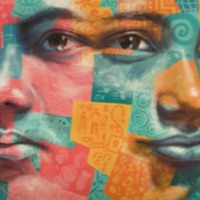
Talia
There are an estimated 403,000 people living in modern slavery in the United States (GSI 2018). Sex trafficking exists throughout the country. Traffickers use violence, threats, lies, debt bondage and other forms of coercion to compel adults and children to engage in commercial sex acts against their will. The situations that sex trafficking victims face vary, many victims become romantically involved with someone who then forces them into prostitution. Others are lured with false promises of a job, and some are forced to sell sex by members of their own families. Victims of sex trafficking include both foreign nationals and US citizens, with women making up the majority of those trafficked for the purposes of commercial sexual exploitation. In 2015, the most reported venues/industries for sex trafficking included commercial-front brothels, hotel/motel-based trafficking, online advertisements with unknown locations, residential brothels, and street-based sex trafficking. Talia* was trafficked for commercial sexual exploitation at the age of twelve in Texas. She was abused in a truck driver prostitution ring by her adopted parents who mentally and physically abused her at home.
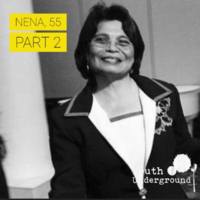
Nena
There are an estimated 403,000 people living in conditions of modern slavery in the United States (GSI 2018). The US attracts migrants and refugees who are particularly at risk of vulnerability to human trafficking. Trafficking victims often responding to fraudulent offers of employment in the US migrate willingly and are subsequently subjected to conditions of involuntary servitude in industries such as forced labour and commercial sexual exploitation. Nena was trafficked into domestic servitude at the age of 55. She had already retired from her teaching job in the Philippines and thought going to the United States would be a good opportunity to financially help her family.
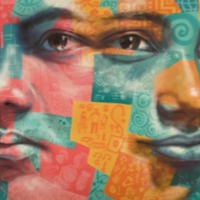
Sisi R.
There are an estimated 61,000 people living in modern slavery in Saudi Arabia (GSI 2018). It is a source and destination country for men and women trafficked from South and South East Asia and Africa. People voluntarily migrate to the country to work in a variety of sectors including construction and domestic service; many of these workers are vulnerable to forced labour. Traffickers and brokers often illegally recruit migrants to work in Saudi Arabia and subsequently forced them into domestic servitude or debt bondage. Female domestic workers are particularly at risk of trafficking due to their isolation inside private residences. Non-payment or late payment of wages remains a complaint from foreign workers, while employer's withholding of worker's passports remains a significant problem. Trafficking perpetrators include businesses of all sizes, private families, recruitment companies in both Saudi Arabia and labor-sending countries, and organized criminal elements. Indonesian domestic worker. Sisi., R. was trafficked into domestic servitude in Saudi Arabia. She was physically abused by her employer and was not paid for her work. At the time of this interview, Sisi had been waiting at the embassy for 11 months to receive the six years of salary owed her by her employers. In order to track the employer down, embassy staff and Saudi police asked her to direct them to the employer’s home.
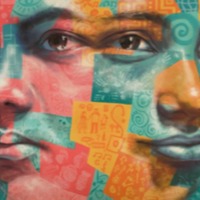
Shanika R.
There are an estimated 61,000 people living in modern slavery in Saudi Arabia (GSI 2018). It is a source and destination country for men and women trafficked from South and South East Asia and Africa. People voluntarily migrate to the country to work in a variety of sectors including construction and domestic service; many of these workers are vulnerable to forced labour. Traffickers and brokers often illegally recruit migrants to work in Saudi Arabia and subsequently forced them into domestic servitude or debt bondage. Female domestic workers are particularly at risk of trafficking due to their isolation inside private residences. Non-payment or late payment of wages remains a complaint from foreign workers, while employer's withholding of worker's passports remains a significant problem. Trafficking perpetrators include businesses of all sizes, private families, recruitment companies in both Saudi Arabia and labor-sending countries, and organized criminal elements. Shanika R., a Sri Lankan domestic worker, travelled to Saudi Arabia for work but was trafficked into domestic servitude. When she requested her salary, her employer shaved her head. She was subjected to physical violence and threats.
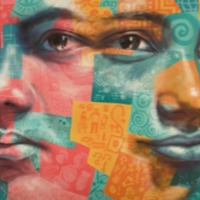
Cristina M.
There are an estimated 61,000 people living in modern slavery in Saudi Arabia (GSI 2018). It is a source and destination country for men and women trafficked from South and South East Asia and Africa. People voluntarily migrate to the country to work in a variety of sectors including construction and domestic service; many of these workers are vulnerable to forced labour. Traffickers and brokers often illegally recruit migrants to work in Saudi Arabia and subsequently forced them into domestic servitude or debt bondage. Female domestic workers are particularly at risk of trafficking due to their isolation inside private residences. Non-payment or late payment of wages remains a complaint from foreign workers, while employer's withholding of worker's passports remains a significant problem. Trafficking perpetrators include businesses of all sizes, private families, recruitment companies in both Saudi Arabia and labor-sending countries, and organized criminal elements. Cristina M. travelled from the Philippines to Saudi Arabia for work. Her employer locked her in the house and forced her to work long hours without pay.
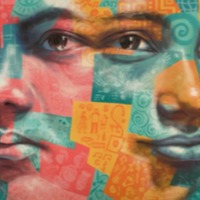
Padma
There are an estimated 61,000 people living in modern slavery in Saudi Arabia (GSI 2018). It is a source and destination country for men and women trafficked from South and South East Asia and Africa. People voluntarily migrate to the country to work in a variety of sectors including construction and domestic service; many of these workers are vulnerable to forced labour. Traffickers and brokers often illegally recruit migrants to work in Saudi Arabia and subsequently forced them into domestic servitude or debt bondage. Female domestic workers are particularly at risk of trafficking due to their isolation inside private residences. Non-payment or late payment of wages remains a complaint from foreign workers, while employer's withholding of worker's passports remains a significant problem. Trafficking perpetrators include businesses of all sizes, private families, recruitment companies in both Saudi Arabia and labor-sending countries, and organized criminal elements. Padma paid an agent for work in Dubai but was instead trafficked to Saudi Arabia and held in domestic servitude. She was subjected to physical abuse daily.
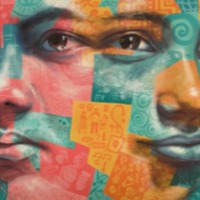
Ani R.
There are an estimated 61,000 people living in modern slavery in Saudi Arabia (GSI 2018). It is a source and destination country for men and women trafficked from South and South East Asia and Africa. People voluntarily migrate to the country to work in a variety of sectors including construction and domestic service; many of these workers are vulnerable to forced labour. Traffickers and brokers often illegally recruit migrants to work in Saudi Arabia and subsequently forced them into domestic servitude or debt bondage. Female domestic workers are particularly at risk of trafficking due to their isolation inside private residences. Non-payment or late payment of wages remains a complaint from foreign workers, while employer's withholding of worker's passports remains a significant problem. Trafficking perpetrators include businesses of all sizes, private families, recruitment companies in both Saudi Arabia and labor-sending countries, and organized criminal elements. A Saudi man, an Indonesian labour agent, and an Indonesian migrant worker deceived Ani R. into believing she was migrating for marriage. At 17 years old, she married the man to help her family but the dowery promised was not given to Ani R.’s father. While Ani was treated well the first month in Saudi Arabia, after this she was subjected to physical abuse and treated as a domestic worker forced to work long hours in the house under the threat of violence. Ani R., tried to escape but her husband found her at a shelter and bribed police to have her return.
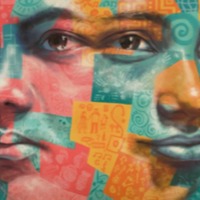
Nour Miyati
There are an estimated 61,000 people living in modern slavery in Saudi Arabia (GSI 2018). It is a source and destination country for men and women trafficked from South and South East Asia and Africa. People voluntarily migrate to the country to work in a variety of sectors including construction and domestic service; many of these workers are vulnerable to forced labour. Traffickers and brokers often illegally recruit migrants to work in Saudi Arabia and subsequently forced them into domestic servitude or debt bondage. Female domestic workers are particularly at risk of trafficking due to their isolation inside private residences. Non-payment or late payment of wages remains a complaint from foreign workers, while employer's withholding of worker's passports remains a significant problem. Trafficking perpetrators include businesses of all sizes, private families, recruitment companies in both Saudi Arabia and labor-sending countries, and organized criminal elements. Nour Miyati had migrated for work twice previously and had good experiences. However the third time she was subjected to physical abuse from her employer, forced to work long hours, had her passport confiscated and was never paid for her labour. When she was finally able to escape Nour filed criminal charges against her employers. The criminal proceedings stretched over three years, while Nour Miyati waited in the overcrowded Indonesian embassy shelter for its resolution. A Riyadh court initially convicted Nour Miyati of making false allegations, sentencing her to 79 lashes, but later overturned this decision. The court dropped charges against her male employer. It sentenced the female employer to 35 lashes for committing abuse, but on May 19, 2008, a judge also dropped the charges against the female employer. That judge still awarded Nour Miyati 2,500 riyals ($668) in compensation, a small fraction of the amounts typically awarded for the types of injuries sustained.
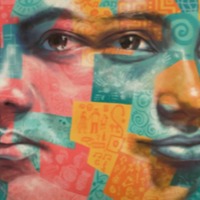
Awais Raza
There are an estimated 136,000 people living on conditions of modern slavery in the United Kingdom (Global Slavery Index 2018). According to the 2017 annual figures provided by the National Crime Agency, 5, 145 potential victims of modern slavery were referred through the National Referral Mechanism in 2017, of whom 2,454 were female, 2688 were male and 3 were transgender, with 41% of all referrals being children at the time of exploitation. People are subjected to slavery in the UK in the form of domestic servitude, labour exploitation, organ harvesting and sexual exploitation, with the largest number of potential victims originating from Albania, China, Vietnam and Nigeria. This data however does not consider the unknown numbers of victims that are not reported. Awais Raza was taken to a children’s home after his mother and father were killed. He describes this home as more like a prison. An older Afghan man helped him escape the abusive and exploitative children’s home and brought him to the UK. Upon arrival he was housed by an Afghan man in Luton and was given a passport. After two years of helping with cooking and cleaning in people’s homes, he sought out an education. At age 20 he was invited to a Home Office interview where he was forced to recount experience he had buried. After hours of questions, he was detained for 13 days before his solicitor could refer him to the National Referral Mechanism. Overall it took five years for Awais to be granted asylum in the UK.
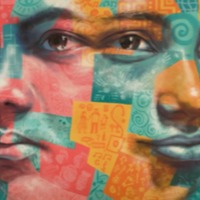
Muneera
It is estimated that almost 8 million people are living in conditions of modern slavery in India (GSI 2018). The skewed sex ratio in some regions of India has fuelled the trafficking and selling of women and young girls as brides within India. Women are reportedly sold off into marriage by their families, sometimes at a young age, and end up enduring severe abuse, rape and exploitation by their husbands. It is also reported that women and girls from impoverished backgrounds have been lured by promises of marriage by younger men from urban areas, then forced into sex work once married. Muneera Beguma was just 12 years old when she was sold into marriage with a man aged 70. She was locked up and subjected to physical and sexual abuse. Eventually he divorced her over the phone. Muneera filed a police case and authorities arrested the middleman involved in selling her.
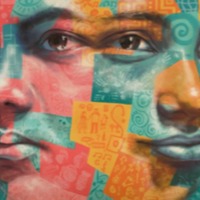
Matthew Dixon
There are an estimated 133,000 people living in modern slavery in Ghana (GSI 2018). Ghana remains a source, transit, and destination country for men, women, and children subjected to forced labour and sex trafficking. Ghanaian boys and girls are subjected to forced labor within the country in fishing, domestic service, street hawking, begging, portering, artisanal gold mining, quarrying, herding, and agriculture, including cocoa. Research focused on the fishing industry on Lake Volta indicated that more than half of the children working on and around the lake were born in other communities and many of these children are subjected to forced labor; not allowed to attend school; given inadequate housing and clothing; and are controlled by fishermen through intimidation, violence, and limiting access to food. Boys as young as five years old are forced to work in hazardous conditions, including deep diving, and many suffer waterborne infections. A study of the prevalence of child trafficking in selected communities in the Volta and Central Regions indicated that children from nearly one-third of the 1,621 households surveyed had been subjected to trafficking, primarily in fishing and domestic servitude. Matthew was trafficked into fishing on Lake Volta, Ghana after he left school to help support his family. The trafficker promised his mother monthly payment in exchange for Matthew’s labour. He was forced to work long hours in dangerous conditions under the threat of violence. After attending workshops on child trafficking Matthew’s mother realised what she had done and organised his release. Matthew is now back at school.

Chong Kim
There are an estimated 403,000 people living in modern slavery in the United States (GSI 2018). Sex trafficking exists throughout the country. Traffickers use violence, threats, lies, debt bondage and other forms of coercion to compel adults and children to engage in commercial sex acts against their will. The situations that sex trafficking victims face vary, many victims become romantically involved with someone who then forces them into prostitution. Others are lured with false promises of a job, and some are forced to sell sex by members of their own families. Victims of sex trafficking include both foreign nationals and US citizens, with women making up the majority of those trafficked for the purposes of commercial sexual exploitation. In 2015, the most reported venues/industries for sex trafficking included commercial-front brothels, hotel/motel-based trafficking, online advertisements with unknown locations, residential brothels, and street-based sex trafficking. Chong Kim’s family moved to the United States from South Korea when she was a toddler. At the age of 19 Kim met a man on a night out in Dallas, Texas whom she began dating. After a few weeks of dating, this man abducted Chong Kim and destroyed her naturalization documents. She was forced into prostitution, sent out with other women to a variety of places across the country. After a year and a half Kim was able to escape while working a casino in Las Vegas, befriending people on the maintenance staff who helped her escape.
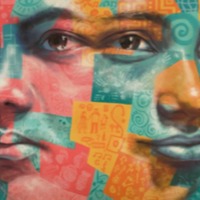
Natasha Herzig
There are an estimated 403,000 people living in modern slavery in the United States (GSI 2018). Sex trafficking exists throughout the country. Traffickers use violence, threats, lies, debt bondage and other forms of coercion to compel adults and children to engage in commercial sex acts against their will. The situations that sex trafficking victims face vary, many victims become romantically involved with someone who then forces them into prostitution. Others are lured with false promises of a job, and some are forced to sell sex by members of their own families. Victims of sex trafficking include both foreign nationals and US citizens, with women making up the majority of those trafficked for the purposes of commercial sexual exploitation. In 2015, the most reported venues/industries for sex trafficking included commercial-front brothels, hotel/motel-based trafficking, online advertisements with unknown locations, residential brothels, and street-based sex trafficking. Natasha was at the mall when a woman offered her a job in the modelling industry. She went to an office building to fill out an application and met the owner of the company. However rather than being given a job, she was kidnapped and forced into prostitution. Natasha was subjected to physical and sexual abuse daily. Natasha tells of the psychological effects of her trafficking and how she is now working towards preventing what happened to her happening ton anyone else.
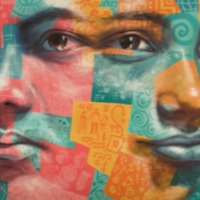
S.
There are an estimated 20,000 people living in conditions of modern slavery in Albania (GSI 2018). An estimated 10% of girls in Albania are married before their eighteenth birthday, with child marriage most common among the Roma ethnic group and in poor, isolated and rural areas. Child marriage is driven by gender inequality and while country has committed to eliminate child, early and forced marriage by 2030 in line with target 5.3 of the UN Sustainable development goals, no progress has been reported thus far. Human traffickers also exploit domestic and foreign victims in Albania, and traffickers exploit victims from Albania abroad. Traffickers exploit Albanian women and children in sex trafficking and forced labor within the country, especially during tourist season. Traffickers use false promises such as marriage or employment offers to force victims into sex trafficking. Traffickers exploit Albanian victims in sex trafficking in countries across Europe, particularly Kosovo, Greece, Italy, Belgium, Germany, Switzerland, North Macedonia, Norway, the Netherlands, and the UK. Albanian migrants who seek employment in Western Europe face forced labor and forced criminality, particularly in the UK. S was born in Albania to a poor family who forced her to marry someone living in Greece at the age of 14. S moved to Greece with her husband illegally, subjected to emotional and physical abuse daily. After a year, S escaped her marriage and was deported back to Albania, however after giving birth to her daughter, Sara, S’s father forced her into another marriage with a 60-year-old man. S escaped this second forced marriage with the help of her father’s friend she had known since she was ten years old. This man, however, attempted to traffik S into prostitution in Italy. She was caught by police on a boat and referred to a safe place back in Albania.
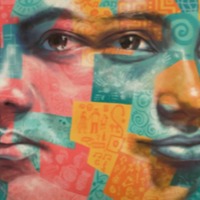
O.
There are an estimated 145,000 people living in conditions of modern slavery in Italy (GSI 2018). Italy is a destination, transit, and source country for women, children, and men subjected to sex trafficking and forced labour. Victims originate from Nigeria, Romania, Morocco, China, and other countries. Female victims are often subjected to sex trafficking in Italy after accepting promises of employment as dancers, singers, models, restaurant servers, or caregivers. Romanian and Albanian criminal groups force Eastern European women and girls into commercial sex. O.’s was forced to marry a man she did not know when she was 14-years old and move to Greece to live with her ‘husband’. She was subjected to physical abuse daily and left after 3 weeks. A neighbour promised to find her a job in Italy, where she travelled to illegally by boat. However, upon arrival she was forced into prostitution, beaten daily until she agreed to work on the streets. O. was able to leave her situation when the police caught her and took her to a centre for minors, where she stayed for a year and a half.
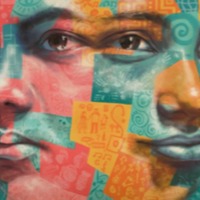
F.
There are an estimated 145,000 people living in conditions of modern slavery in Italy (GSI 2018). Italy is a destination, transit, and source country for women, children, and men subjected to sex trafficking and forced labour. Victims originate from Nigeria, Romania, Morocco, China, and other countries. Female victims are often subjected to sex trafficking in Italy after accepting promises of employment as dancers, singers, models, restaurant servers, or caregivers. Romanian and Albanian criminal groups force Eastern European women and girls into commercial sex. F had ambitions of going to university to study law. One day she was coming home from work when a car stopped in front of her. Two men jumped out and kidnapped her. She was kept for a week by the sea, sexually and physically abused, before being taken to Italy by speedboat. Upon arrival, F was forced into prostitution. She tried to escape once, being deported back to Albania by Italian police, however her trafficker found her and re-trafficked her back to Italy. F was finally able to escape after falling in love with one of her clients who helped her.
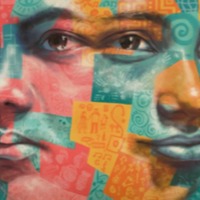
Nia
There are an estimated 520,000 experiencing modern slavery and human trafficking in the Arab States (GSI 2018). The Arab States are made up of 11 countries including Bahrain, Iraq, Jordan, Kuwait, Lebanon, Oman, Qatar, Saudi Arabia, Syria, United Arab Emirates and Yemen. The region is diverse, spanning the wealthier Gulf Cooperation Council (GCC countries) and countries such as Jordan, Lebanon, and Iraq, which are dealing with the impact of ongoing conflict in Syria. When considering the forms of modern slavery, the largest share of those in modern slavery were victims of forced labour (2.2 victims per 1,000 people), while the rate of forced marriage was 1.1 victims per 1,000 people. Over half of those in forced labour were held in debt bondage, with this form of trafficking affecting women at a greater share than men. Men and Women - primarily from South and South East Asia and Africa - voluntarily migrate to Arab States for work in a number of sectors, including construction and domestic service. Upon arrival they experience withholding of payment, debt bondage and abuse. Nia was not making enough money to take care of her children when a friend’s sister offered her a housekeeping job in Saudi Arabia. While initially she was treated well, after a few months Nia was subjected to physical abuse and withholding of pay. Nia was able to escape this situation after six months and return to Kenya. However, Nia still needed to provide for her children and travelled abroad for work two more times to Qatar and Libya, both time being mistreated and unpaid. Nia finally received assistance from HAART Kenya and set up her own salon in Kenya which was going well, until the COVID-19 pandemic left her unable to run her business. Nia is now receiving temporary financial support from HAART Kenya.
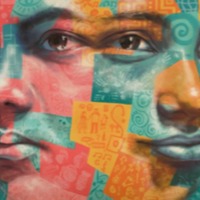
Ghali
There are an estimated 133,000 people living in conditions of modern slavery in Niger (GSI 2018). Niger is a source, transit and destination country for men, women and children subjected to forced labour and sex trafficking. Traditional slavery practices perpetuated by politically powerful tribal leaders continue primarily in the northern part of the country. Nigerien boys are subjected to forced labour, including forced begging, within the country and in neighbouring countries, especially by corrupt marabouts. Loosely organized clandestine networks may also place Nigerien girls into domestic servitude. Nigerien children are subjected to forced labour in gold, salt, trona, and gypsum mines; agriculture; stone quarries; and manufacturing within the country. Ghali had been trapped in bonded labour since early childhood. He was forced to work long hours with little food, subjected to physical and mental violence. Ghali tells of his path out of slavery with the help of Anti-slavery partners Timidria.
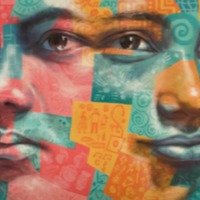
Ashia C
There are an estimated 171,000 people living in modern slavery in Nepal (GSI 2018). Within Nepal, bonded labour exists in agriculture, brick kilns, the stone-breaking industry, and domestic work. Sex trafficking of Nepali women and girls increasingly takes place in private apartments, rented rooms, guest houses, and restaurants. Nepali and Indian children are subjected to forced labor in the country, especially in domestic work, brick kilns, and the embroidered textile, or zari, industry. Under false promises of education and work opportunities, Nepali parents give their children to brokers who instead take them to frequently unregistered children’s homes in urban locations, where they are forced to pretend to be orphans to garner donations from tourists and volunteers; some of the children are also forced to beg on the street. According to Human Rights Watch, thirty-seven percent of girls in Nepal marry before age 18 and 10 percent are married by age 15, in spite of the fact that the minimum age of marriage under Nepali law is 20 years of age. UNICEF data indicates that Nepal has the third highest rate of child marriage in Asia, after Bangladesh and India Ashia C was forced to marry at an early age. Within the marriage she was subjected to physical violence.
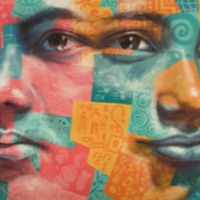
Mary B
There are an estimated 136,000 people living on conditions of modern slavery in the United Kingdom (GSI 2018). According to the 2017 annual figures provided by the National Crime Agency, 5, 145 potential victims of modern slavery were referred through the National Referral Mechanism in 2017, of whom 2,454 were female, 2688 were male and 3 were transgender, with 41% of all referrals being children at the time of exploitation. People are subjected to slavery in the UK in the form of domestic servitude, labour exploitation, organ harvesting and sexual exploitation, with the largest number of potential victims originating from Albania, China, Vietnam and Nigeria. This data however does not consider the unknown numbers of victims that are not reported. “Mary” came to the UK with an overseas domestic worker visa. Her passport was taken by her employer. She escaped after 12 weeks. By the time she entered the National Referral Mechanism (NRM)—the UK’s framework for identifying and referring potential victims of modern slavery and ensuring they receive the appropriate support—her visa had expired and she did not have the right to work. Domestic servitude accounted for 7% of the reported exploitation type of potential victims referred to the NRM in 2018, and 9% of the total potential victims indicated by contacts to the Modern Slavery Helpline in 2018. The narrative is from her oral evidence to the Home Affairs Committee’s Modern Slavery Inquiry on November 6, 2018, in a private closed-door session with three MPs. Her name has been changed and identifying details have been redacted, including her home country, the year she came to the UK, and the name of a charity.